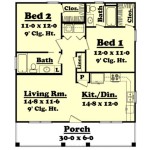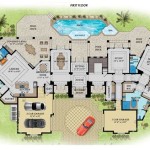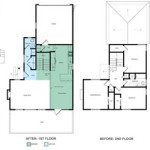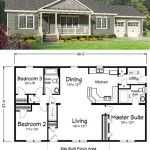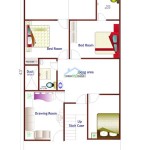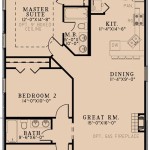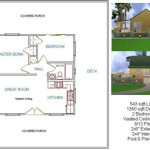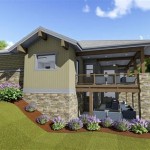Home Plans for Handicapped Living
Designing a home for handicapped living requires careful consideration of accessibility and safety features to ensure a comfortable and independent living environment. Here are comprehensive and inclusive home plans that cater to the needs of individuals with disabilities:
1. Accessible Entry:
The front entrance should be accessible with a wide door opening, ramps, and handrails for easy entry. Thresholds should be flush to avoid tripping hazards.
2. Barrier-Free Layout:
The interior layout should minimize barriers and ensure smooth movement throughout the home. Wide hallways, open floor plans, and accessible doorways are essential.
3. Accessible Bedrooms:
Bedrooms should have ample space for assistive devices and mobility. Adjustable beds, grab bars in the bathroom, and wider doorways for wheelchairs are recommended.
4. Adapted Kitchen:
The kitchen should be designed with accessible features such as lowered countertops, pull-out shelves, and appliances that can be easily reached from a seated position.
5. Accessible Bathrooms:
Bathrooms need a roll-in shower or tub, wider stall, and strategically placed grab bars for safety. Vanity height and sink depth should be adjustable to accommodate wheelchairs.
6. Universal Design Principles:
Incorporate universal design principles to make the home accessible to everyone, regardless of age or disability. Lever handles, non-slip flooring, and adjustable lighting can enhance ease of use.
7. Technology Integration:
Consider integrating smart home technology for increased independence. Voice-activated controls, remote door locking, and fall detection systems can improve safety and convenience.
8. Outdoor Accessibility:
Ensure the outdoor space is accessible with ramps, wide sidewalks, and accessible seating areas. Gardens should be raised for easy reach from a wheelchair.
9. Safety Considerations:
Install grab bars in strategic locations, such as near toilets, showers, and beds. Motion-activated lighting, non-slip flooring, and smoke and carbon monoxide detectors enhance safety.
10. Personalization and Comfort:
While accessibility is paramount, it's equally important to personalize the home to reflect the resident's preferences. Color schemes, decor, and furniture should be selected for comfort and ease of use.
By incorporating these home plans, individuals with disabilities can enjoy a safe, comfortable, and independent living environment that meets their unique needs.

Wheelchair Accessible Small House Plans Drummond

House Plans With Accessible Handicap

Wheelchair Accessible House Plan 2 Bedrms Baths 1687 Sq Ft 147 1009

Wheelchair Accessible Floor Plan

How To Make Your Home Wheelchair Accessible

How To Make Your Home Wheelchair Accessible

Rustic Wheelchair Accessible Shingle Cottage 681 Sq Ft 871006nst Architectural Designs House Plans

Wheelchair Accessible Small House Plans Drummond

Small Space Accessibility Accessible Homes

The Best Layouts For Handicap Accessible Homes Braulity

